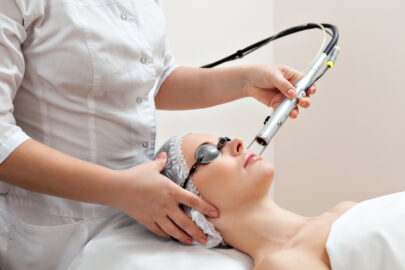Melasma, a common skin condition characterized by dark, discolored patches on the skin, primarily affects women, though men are not entirely immune. These patches often appear on the face, particularly the forehead, cheeks, bridge of the nose, and upper lip, contributing to an uneven skin tone that many find distressing. While melasma poses no medical concern, its aesthetic impact can significantly affect an individual’s confidence and quality of life. Understanding melasma, its causes, preventive measures, and effective melasma treatment options, including non-surgical methods like the Pico Laser, is essential for those looking to restore their skin’s natural beauty.
What is Melasma?
Melasma is a form of hyperpigmentation that results in symmetrical, blotchy, brownish facial pigmentation. It occurs when melanocytes, the cells responsible for producing melanin, become hyperactive and produce too much pigment. Despite being a benign condition, the challenge it poses aesthetically drives many to seek effective treatments.
Causes of Melasma
Several factors contribute to the development of melasma, understanding which is crucial for effective prevention and treatment.
Sun Exposure
The primary trigger for melasma is exposure to ultraviolet (UV) light from the sun, which stimulates melanocytes. Even brief periods of sun exposure can lead to the development of melasma or exacerbate existing conditions, making sun protection a critical preventive measure.
Hormonal Changes
Melasma is often associated with hormonal changes, particularly those related to pregnancy (often referred to as the “mask of pregnancy”) and the use of oral contraceptives or hormone replacement therapy. These hormonal fluctuations can trigger an increase in melanin production.
Genetic Factors
Genetics also play a significant role in the predisposition to melasma. Individuals with a family history of the condition are more likely to develop it themselves.
Skin Irritation
Certain skin care products can irritate the skin, leading to inflammation and an increased risk of melasma. It’s essential to use gentle, non-irritating products, especially if you have a history of melasma.
:max_bytes(150000):strip_icc()/GettyImages-536778385-a8e9aef3c05f492aba53a9767a2d0c6e.jpg)
Preventing Melasma
Prevention is a critical component of managing melasma. Daily application of a broad-spectrum sunscreen with an SPF of 30 or higher is non-negotiable, even on cloudy days or when indoors. Additionally, wearing wide-brimmed hats and seeking shade can further protect the skin from UV damage. Choosing skin care products carefully to avoid irritation can also help prevent melasma.
Non-Surgical Treatments for Melasma
For those already affected by melasma, several effective non-surgical melasma treatment options are available, aiming to reduce pigmentation and achieve a more even skin tone.
Topical Treatments
Topical creams containing ingredients like hydroquinone, tretinoin, and corticosteroids can lighten melasma patches when used consistently. These treatments work by inhibiting melanin production, but patience is required as they can take several months to show visible results.
Chemical Peels
Chemical peels can improve melasma by removing the outermost layers of the skin, allowing new, less pigmented skin cells to surface. Peels should be performed by a skilled professional to avoid exacerbating the condition.
Microdermabrasion
Microdermabrasion is a mechanical exfoliation technique that can help lighten melasma by removing dead skin cells and promoting cell turnover. This treatment is typically more effective for mild cases.
Pico Laser
The Pico Laser is a breakthrough in melasma treatment, offering a non-invasive option that works by delivering short laser pulses to break down melanin pigments into smaller particles. These particles are then naturally eliminated by the body. Unlike traditional lasers, the Pico Laser minimizes heat damage to surrounding tissues, reducing the risk of post-inflammatory hyperpigmentation—a common concern in melasma treatment. The Pico Laser can provide noticeable improvement in melasma with fewer sessions and minimal downtime, making it an increasingly popular choice for those seeking effective solutions.
Who Should Seek Melasma Treatment?
Melasma treatment is suitable for anyone looking to improve the appearance of melasma and achieve a more even skin tone. It’s essential to consult with a dermatologist or skincare professional who can recommend the most appropriate treatment based on the individual’s skin type, the severity of the melasma, and other relevant factors.
Conclusion
Melasma, while a harmless condition, can significantly impact an individual’s appearance and self-esteem. Understanding its causes and taking preventive measures can help manage this condition effectively. For those affected, various non-surgical melasma treatment options, including the innovative Pico Laser, offer hope for reducing pigmentation and achieving a clearer, more even complexion. Consulting with a skincare professional can provide personalized advice and ensure that you choose the most effective treatment plan for your specific needs. With the right approach, achieving a more even skin tone and regaining confidence in your appearance is entirely possible.





